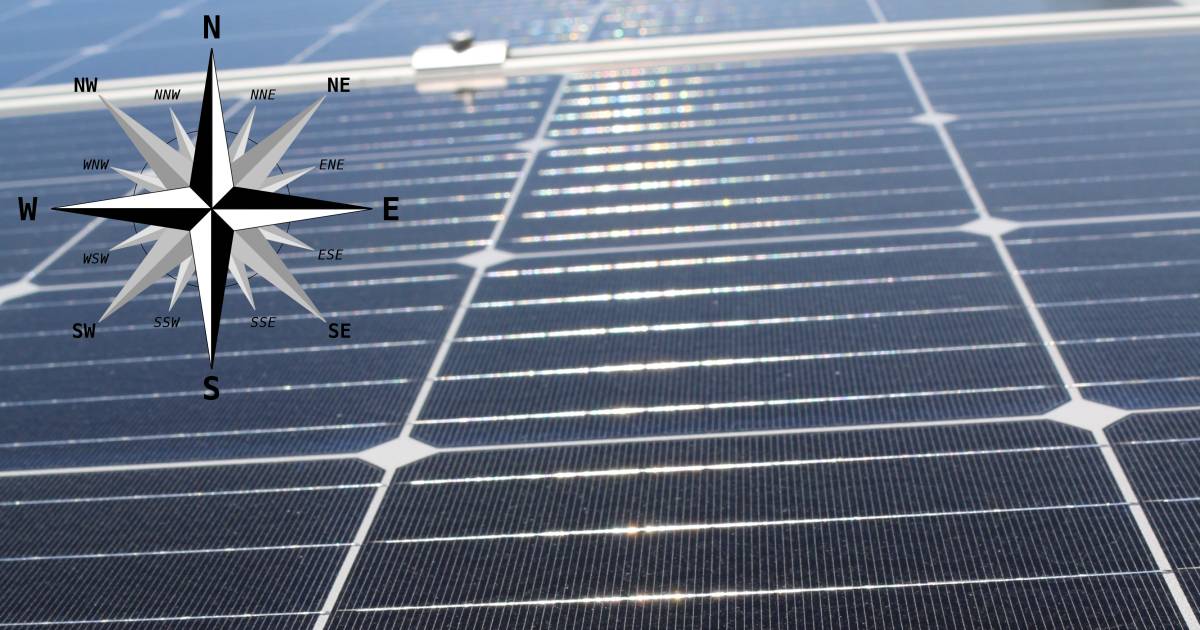A UniSA solar researcher says it’s time to rethink solar panel orientation (direction) to better suit peak electricity usage periods and maximise solar energy self-consumption.
PhD candidate Kirrilie Rowe notes solar panels on homes in Australia have typically been installed facing the equator (north) to maximise electricity production, but the power generated in this scenario peaks around midday. However, residential loads typically have peaks in the morning and afternoon/evenings as families get ready for work and school, and then as people return home.
All this north-facing solar is having an impact says Ms. Rowe.
“In some markets at certain times we’re already seeing over-supply during peak production times, which can cause grid instability and is leading to reductions in feed-in tariffs”.
Her research involved a study with Associate Professor Peter Pudney using detailed load and irradiance data to calculate the optimal self-consumption panel orientations for a community of 29 dwellings and a residential building with 42 apartments.
“In both cases, panels should initially be installed facing north-west to meet the afternoon loads. If more panel area is available, the optimal configuration has fewer panels facing north-west and more facing north-east and west.”
Ms. Rowe states their research has been used to design a renewable energy system for a retirement village with 24 dwellings, and future work will incorporate energy storage into the model.
Solar Panel Orientation Tools And Info
Here on SolarQuotes you’ll find a detailed article on solar panel orientation here. There’s also a tool on that page for determining the optimum solar panel orientations in each capital city for maximising energy yield and a table indicating how much energy you can expect to generate from almost any combination of solar panel direction and angle compared to the ‘optimum’ orientation – but just keep your electricity consumption profile in mind.
The benefits of optimising orientation for your circumstances are three-fold:
- Decreasing the amount of mains grid electricity consumed.
- Extracting the maximum value from the solar electricity generated.
- Helping to decrease the amount of variability between peak and low loads on the mains grid.
As feed-in tariffs have reduced and will likely further decrease in the future, solar panel direction is becoming an increasingly important part of planning a PV installation. Solar panel angle also comes into play, but generally it’s not such an important issue unless your roof is pitched at less than 10°.


 RSS - Posts
RSS - Posts



Households and businesses should also be encouraged to “oversize” their solar systems and have solar panel capacity considerably larger than inverter capacity to produce a more constant output during the day and under varying cloud conditions.
In reality most households don’t have a choice of any orientation that they like and so it depends what space is available in which directions. Combined with over-sizing the panels should mean that an East/West configuration is about as optimum as it gets. Panels East and west produce a more even distribution over the day compared to North only and would suffer from less clipping during the middle of the day compared to North only.
The only real advantage to North only would be producing more in winter in the southern states.
Really, any of North+West, East+West or North East+North West are excellent and probably all are better than North only considering usage patterns and clipping. And the majority of system I see on roofs do indeed use one of those combination.
Dear UniSA, thanks for the tip. I’ll just get a quote to pick up my entire house and have them turn it around so it faces a different direction.
Most houses have more than one direction to their roof pitch, no need to be facetious. I have a East/West orientated house, so my North/South exposure is very limited, and as a consequence most of my panels are facing North.
But even in that limited space (East and West) I could fit 8 panels on each.
8 x 400w = 3200w x 2 = 6.4kW. The study as published is indeed worth considering… even for those who already have North panels. More production in peak is definitely worth it.
I think that any interested punter that has looked at the solar irridance curve for north facing panels and the typical consumption curve for dwellings has been aware of the need to orientate PV panels to better match demand cycles This article highlights a seemingly questionable allocation of resources to have a PhD candidate doing less than useful investigations instead of more challenging and potentially useful research.
I think many of the correspondents to these blogs or even Ron’s horse Tonto could have come to the conclusions Ms Rowe has come up with.